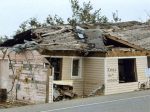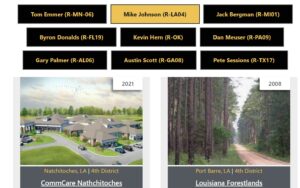
After Katrina and Rita, the New Markets Tax Credit (NMTC) served an important role in rebuilding community facilities including hospitals and schools, helping businesses replace damaged furniture and equipment, and bringing life back to devastated areas. Disasters isolate low-income areas that already lag far behind affluent communities in the availability of basic services like healthcare as well as the physical infrastructure needed to grow businesses and create economic opportunity. The construction of facilities and infrastructure is important, but economic recovery is difficult – if not impossible – if residents have no where to live. Katrina and Rita collectively displaced 1.3 million people and caused severe or major damage to tens of thousands of owner-occupied homes in areas struggling with high poverty and unemployment before the storm.
The NMTC played an underappreciated role in financing new or renovated homes for displaced families after the storm. NMTC financing supported more than 1,000 single-family homes for displaced residents of disaster areas. One example is a groundbreaking, scalable project supported by Greenline Ventures, a community development organization that finances projects that provide returns for investors and create positive impact in communities.
A Model for Rebuilding Homes
Hurricanes – like thunderstorms – often create damage that looks scattered or convective on a map. One neighborhood be severely damaged while an adjacent neighborhood sits remarkably untouched. Displaced residents wait in shelters or stay with family and friends, but their luckier neighbors see their economic prospects suffer as well. A community cannot fully recover until its residents return to their homes, making it whole again.
“Housing really is the most immediate concern after a hurricane,” said Kermit Billups of Greenline Ventures.
While programs like LIHTC are very effective in financing large-scale rental developments, federal affordable housing policy does leave some gaps, and Greenline Ventures saw an opportunity to use the NMTC’s flexibility to meet scattered, single-family housing needs and put people back to work. Greenline provided $700,000 in NMTC financing to a small, local developer to support 13 new affordable single-family houses in Louisiana.
To expedite the project, Greenline coordinated with local housing agencies and helped first-time developers understand the scope and desired outcomes of the rebuilding effort while helping them navigate red tape. They engaged local, minority and woman-owned contractors for most of the work, and eighty-five percent of the workers hired for construction were local. To finance the project, Greenline provided a clustered site redevelopment loan product that was not available on the conventional market and only possible thanks to subsidy from the NMTC.
“We followed the General Patton model of development: GET IT DONE.” said Billups. “Housing kits and materials were shipped directly to construction sites so that building could begin as quickly as possible.”
The project served as a scalable model for GO-Zone Housing development through public-private partnerships. It also provided the developer with credentials to receive an award for $75 million in FEMA and New Orleans funds to build similar housing in the region. Ultimately, they financed 450 units in New Orleans, Baton Rouge, and Lake Charles, creating an additional 540 construction jobs.





